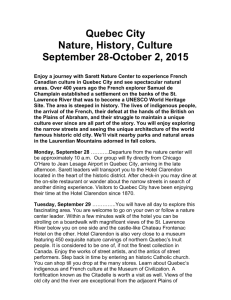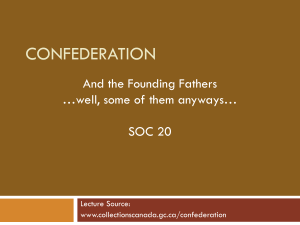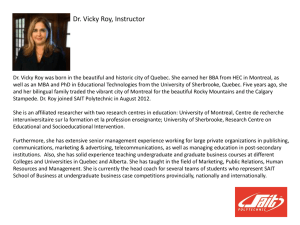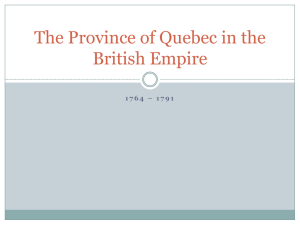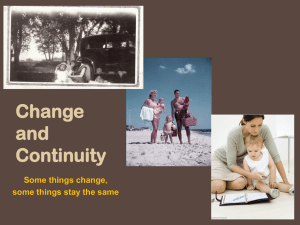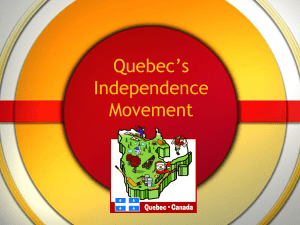French 1 Chapitres 3-4
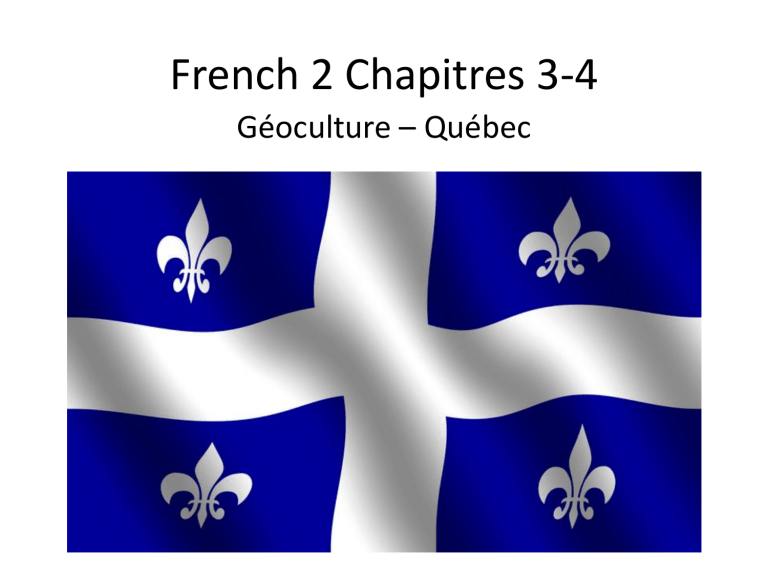
French 2 Chapitres 3-4
Géoculture – Québec
Almanac
• Name of the inhabitants: Les Québécois
(Eng: Quebeckers)
• Population: More than 160,000 inhabitants
• Famous people: Marie-Claire Blais, Yves
Thériault, Félix Leclerc, Guy Laliberté
• Economy: food industry, textiles, port traffic, tourism
Geography
• Quebec City lies where the Saint Lawrence and Saint Charles rivers meet.
• The historic district of the capital, Vieux
Québec, is divided into the Haute-Ville (Upper
Town) and the Basse-Ville (Lower Town).
• The foritified Haute-Ville sits on top of Cap
Diamant (Cape Diamond), while Basse-Ville lies below and around the steep cliffs.
Battle of the Plains of Abraham
• This decisive battle altered the course of
Canadian history.
• Up until 1759, the French had ruled over all of
Canada, but after the British defeated them at
Quebec City, they lost control of the colony to the British.
Les plaines d’Abraham
• In 1759, the English fought the French here.
Today, it’s a large park.
Battle of Quebec
• During the American Revolution, the
Americans attacked the British at Quebec City, hoping to bring the Canadians in on their side of the war.
• They were defeated and the Canadians remained loyal to the British.
Quebec City
• Quebec City is considered the cradle of French civilization in North America.
• Although most of the inhabitants are bilingual, about 95% can claim French ancestry.
Hotel de Glace – Ice Hotel
• Tourists who visit Quebec City in the winter can stay in a hotel where everything is made of ice, even the beds.
• About 350 tons of ice are used each winter to build the Ice Hotel, a huge structure covering
3,000 square meters, that melts in the spring.
Hotel de Glace – Ice Hotel
Hotel de Glace – Ice Hotel
Hotel de Glace – Ice Hotel
La Chute Montmorency
• taller than Niagara Falls
• freezes in the winter and you can climb it
La place Royale
This is where
Samuel de
Champlain founded Quebec
City in 1608.
La terrasse Saint-Denis
• This large promenade offers a beautiful view of the Saint Lawrence River.
• It’s one of the favorite meeting places of young Québécois.
La terrasse Saint-Denis
Les fortifications
• Quebec is the only fortified city in
North
America.
• In this nice neighborhood, there are a lot of artist workshops, cafés, and boutiques.
Le Petit-Champlain
Le château Frontenac
• The châteaux
(castles) in the
Loire Valley in
France inspired the architecture of this hotel.
Le château Frontenac
• The Château Frontenac was built as a luxury hotel between 1893 and 1924 by the Canadian
Pacific Railway as a stopover for its customers.
• It was here that U.S. President Franklin D.
Roosevelt, British Prime Minister Winston
Churchill, and Canadian Prime Minister
William Lyon Mackenzie King met during
WWII to work out their countries’ strategies against Hitler.
• Today it is considered the national symbol of
Quebec.
La terrasse Dufferin
• 425-meter boardwalk at the foot of the
Château Frontenac that attracts crowds in all seasons.
• In warmer months, people go there to take a leisurely walk, watch street performers, or meet their friends.
• During the winter, people gather to skate at the outdoor ice rink or go sledding.
La terrasse Dufferin
L’escalier Casse-Cou – Breakneck Steps
The stairs that join the Upper Town with the Lower
Town are one of the architectural characteristics of
Quebec.
Le Musée de la civilisation
• Incorporates historic buildings in a modern ensemble to symbolize the link between the past and the present.
• 20,000 square-meter contemporary building situated in the heart of Quebec City’s historical district.
• Made of local materials, it’s roof, dormer windows, and steeples blend in with those of nearby houses and churches.
Le Musée de la civilisation
La maison Jacquet
• The oldest house in the Upper Town. It has preserved its appearance from the 17 th century with its attic roof and its small-paned windows.
• Houses such as this one were built with the region’s harsh winters in mind. Their simplicity also reflects the lack of materials and labor available to early settlers.
La maison Jacquet
Typical houses of the 17 th century were rectangular and had two-sided, sloping roofs made of cedar shingles. They had few windows and one or two chimneys.
La maison Jacquet
Les Grands Feux Loto-Québec
• Takes place every summer in the
Montmorency Falls Park
• Several countries participate in this fireworks contest every July
Les Grands Feux Loto-Québec
Le Festival d’été de Québec
• Very important cultural event
• International artists present music, dance, and animation performances
• Every July, francophone musicians present hundreds of free concerts during this festival.
They play different types of music, ranging from pop and hip-hop to classical and traditional music.
Le Festival d’été de Québec
Les Fêtes de la Nouvelle-France
• In the month of August, the Québécois dress in costumes from the 17 th & 18 th centuries and organize parades, balls, and performances to commemorate the beginning of the colony.
Les Fêtes de la Nouvelle-France
Les Fêtes de la Nouvelle-France
La cuisine traditionnelle
• Served in restaurants in Old Quebec (Vieux-
Québec) and resemble French cuisine.
• Uses local products, like game, dry vegetables, and maple syrup.
La poutine
• Popular Québécois dish made of fries covered in cheddar cheese and gravy
Les desserts à l’érable
• Maple syrup is present everywhere in
Québécois cuisine, for example in its pastries.
Traditions
Le temps des sucres occurs each spring.
Families spend the day at cabanes à sucre
(sugar shacks) gathering sap from maple trees, making dishes such as soupe aux pois,
omelettes dans le sirop, and tartlettes à
l’érable, and folk dancing in the evening.
In the summer, artists set up shop on this street to sell paintings and drawings.
La rue du Trésor
La fresque des Québécois
• Represents places characteristic of the city and also important characters from Québec’s history.
• Those that influenced both Canadian and world history include explorer Jacques Cartier, Samuel de
Champlain, founder of Quebec City, and Louis
Jolliet, discoverer of the Mississippi.
• Other figures of more local impact include Louis de
Buade, Count of Frontenac, defender of Quebec
City against the British, Catherine de Longpré, an administrator at Quebec City’s first hospital, and
Félix Leclerc, ‘the father’ of Québécois song.


